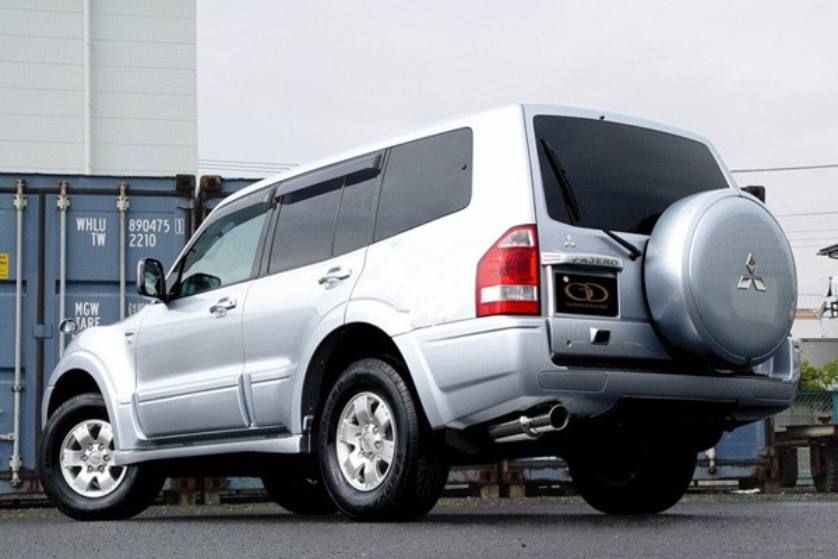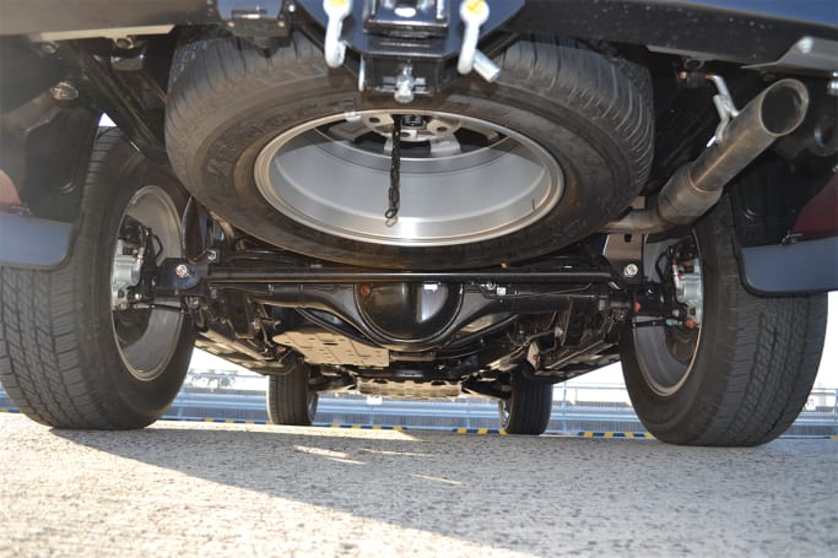Mitsubishi’s rich racing history is no more evident than in the Pajero. Crowned as the “King of the Desert” (and winner of successive Paris-Dakar rallies), the car has spanned almost four decades in providing drivers pure off-roading fun. Continual improvement in subsequent models has yielded four generations, from the first Pajeros to land in Australia in the early 1980s. Though discontinued, or morphed into the Pajero Sport, there are hundreds of cars up for grabs second-hand. If you’re serious about tackling the Aussie Outback, then the Pajero is hard to overlook.
A big car that doesn’t hide its intentions, the Pajero comes in raunchy six-cylinder diesels and petrols that will effortlessly glide in city traffic or put the grunt down when in the dirt. What makes the Pajero a worthy alternative to all the Landcruisers and Patrols is its independent suspension both up front and back, the centre diff lock and decent gearing, and good ground clearance. The slight shortfall in pure horsepower is easily remedied by adding an aftermarket Pajero exhaust system.

source: pinterest.com
Contents
Why Upgrade the Stock Exhaust in the Pajero?
The most obvious reason to upgrade the exhaust is to prevent gas flow restriction in the narrower tubing commonly found in stock exhaust piping. As the engine builds up speed, the number of exhaust gases increases and so does temperature. This is all good when idling, but at higher rev ranges there’s the chance of exhaust gases making their way back towards the cylinders in what is known as exhaust backpressure. It can hinder the work of the exhaust valves, effectively choking the engine. Backpressure also limits the efficiency of the turbo in the diesel Pajeros, depriving the engine of needed air intake and boost.
Such limitations are resolved with wider tubing. This is set at 3 or 3.5 inches in diameter along the entire length of the exhaust. Having wider exhaust piping allows for air to exit faster, and puts less pressure on the engine as it moves its way towards the redline. You’ll be doing the car a favour by not stressing the motor in more demanding situations and also saving some fuel in the process. For serious off-roading, you’ll need all the available power you can get, and an uprated Pajero exhaust definitely helps.
What to Look for in an Aftermarket Pajero Exhaust?
Build and Materials
There are dozens of aftermarket exhausts you can get your hands on. Of course, not all are created equal. Exhaust builders need to comply with current Australian Design Rules that set standards for auto parts and how they fit in the whole configuration of the vehicle. For exhausts, it is important to have quality materials, able to stand up against high heat and corrosion. Longevity is upped with the use of high-grade stainless steel, which is also powder-coated in heat resistant enamel. Tight bends are formed by mandrel bending for uniformity and to prevent gas flow restriction. Look for hand-built exhausts from renowned makers.

source: offroading.com
Exhaust Parts and Types
Buyers can choose between basic axle-back exhausts for their Pajero, that replace the muffler and tips to get a louder and deeper exhaust note. You won’t see significant gains in how the car drives, apart from the roar from the back. For the diesels, you get better results with DPF-back exhausts that change all the parts from the Diesel Particle Filter to the exhaust tips. This includes front, intermediate and rear connecting pipes as well as the tailpipe assembly. The best performance is achieved with turbo-back exhausts, that start with better, wider and lighter tubing from the exhaust manifolds, an included dump pipe for dumping excess gases and reducing pressure, and improved catalytic converters and DPF filters for quicker and more efficient burning of toxic gas particles. You can also choose the configuration of the muffler, and add a resonator to drone out the exhaust sound.
Diesel exhausts are sold for the 2.8, 3 and 3.2-litre engines in the second, third and fourth-gen cars, respectively. These are the majority of Pajeros on the streets. You can also spec an aftermarket exhaust for the 3.5 and 3.8-litre petrol cars. Keep in mind the model year and engine type to ensure correct fitting and operation.
Installation
Exhausts need proper fitment to reach the quoted performance gains. For the Pajero, all supporting mounts and brackets, along with connecting parts like gaskets, nuts and bolts are included in the package. Aftermarket Pajero exhausts are bolt-on types, so no modifications are done to the underbody. They slip in the recesses in the car. Installation can take a few hours, depending on the type of exhaust you go for. All units are tested before leaving workshops.
You can choose to do the installation yourself if you want to save some cash. Look for kits with included installation instructions. Personally, I’d have it done by a pro, and also swap out the air filters and do an ECU remap for that extra kick to the whole setup.
Where to Look for a Pajero Exhaust
There are dozens of Aussie exhaust builders. They cater to standard production vehicles, like the Pajero, or to one-off racing cars like the Paris-Dakar winning car. Many have been building exhausts for decades. Browse the web for detailed info and remember to shop for a compatible exhaust that gets the most out of your engine.










